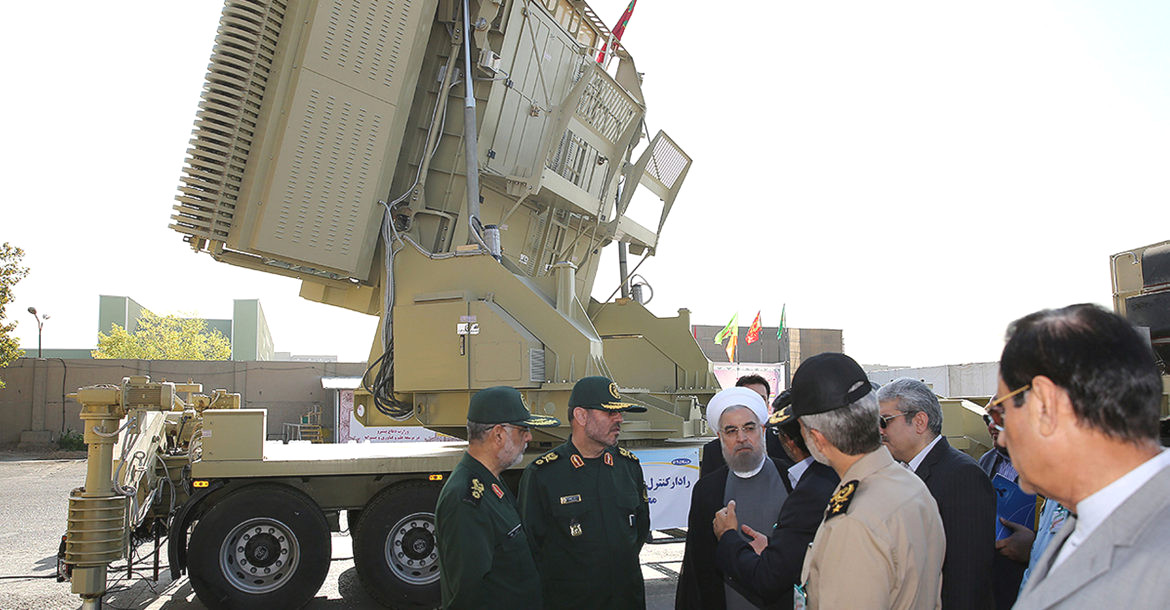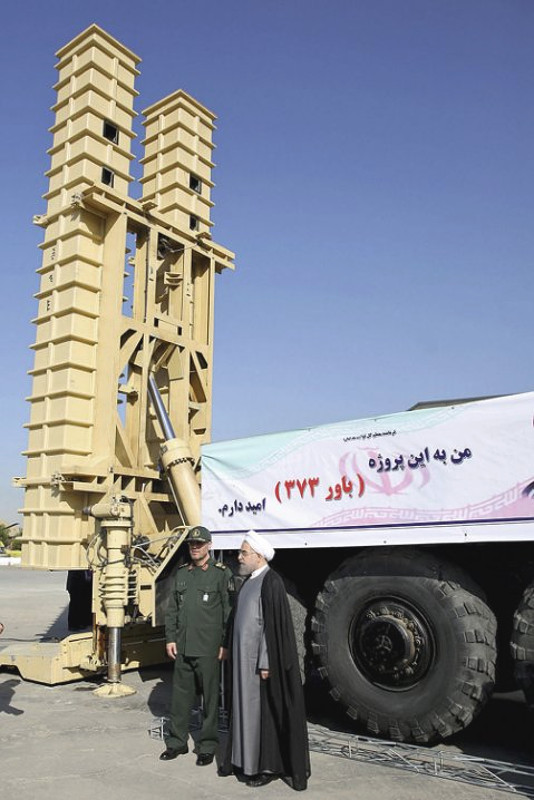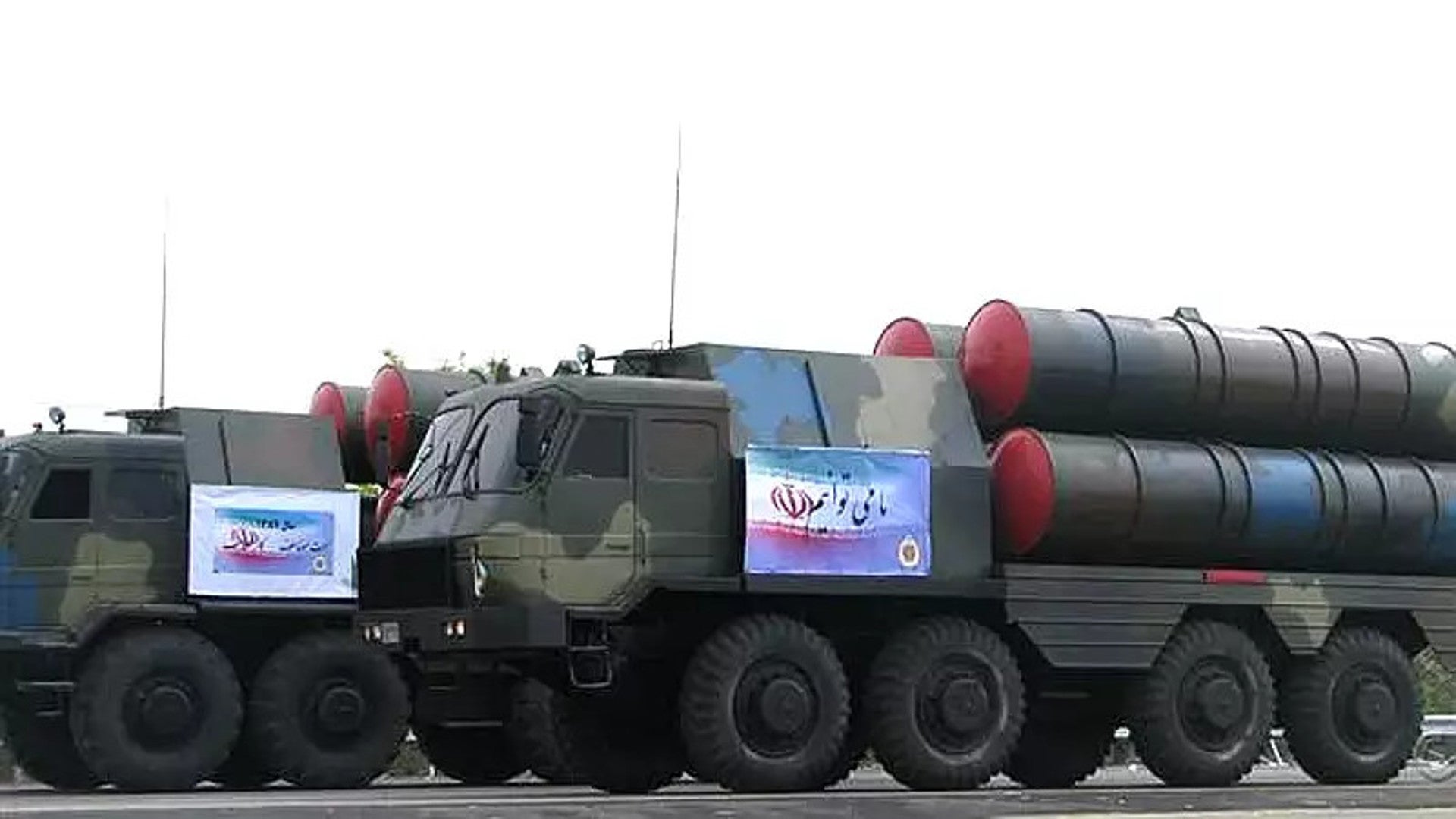Iran claims that it has successfully tested its Bavar 373 long-range surface-to-air missile system in a ballistic missile defense role. True or not, the announcement comes as Israel is expanding its own conventional ballistic missile and long-range rocket artillery capabilities, some of which it has already used against Iranian interests in neighboring Syria, as part of a larger plan to create a new “Missile Corps.”
Iranian Air Defense Force Brigadier General Mahmoud Ebrahiminejad, Deputy Commander of the Khatam al-Anbia Air Defense Base said that the test had occurred in 2017 during an interview with Iran’s Tasnim News Agency on Sept. 10, 2018. Iran has been working on the Bavar 373 since at least 2011 and declared that it completed its initial operational evaluation in January 2018.
Bavar 373 as “more powerful and more reliable” than Russia’s S-300PMU-2, which Iran also operates, Ebrahiminejad claimed. The “biggest advantage,” however, is that Iranian defense companies make the system, so the country does not have to rely on outside suppliers, he added.
It’s not clear how much the Bavar 373 does or doesn’t draw from the S-300. When Iran first showed a prototype to the public in 2016, the transporter-erector-launcher (TEL) appeared to be significantly different visually, featuring rectangular launch canisters more in line with the U.S. Patriot surface-to-air missile system than that of Russian designs. The Iranian system also uses a distinct and apparently locally produced phased array radar.

However, subsequent examples of the TEL look very much like a variant of the S-300PMU-2. It is possible observers have misidentified these and that they are actually the Russian launchers, but mounted on Iranian-made vehicles. There is also an indication that the TEL with the rectangular launch canisters is actually part of the shorter-range Talash-3 surface-to-air missile system.
The Sayyad-4 interceptor itself is visually reminiscent of the Russian 48N6E2 missile for the S-300 system. The 48N6E2 has a maximum range of around 120 miles and Russia claims that it has some ability to engage tactical ballistic missiles.

Whatever the exact connection between the Bavar 373 and the S-300PMU-2, the two systems do appear to be roughly analogous. The Iranians began developing the Bavar 373 in the first place after experiencing difficulties – including sanctions and contract disputes – in acquiring Russian-made long-range surface-to-air missile systems to help defend against the threat of Israeli or American air strikes against sensitive sites, including elements of their controversial nuclear program.
Based on what is publicly known about the S-300 and what information is available about the Bavar 373, the latter system would likely only have a limited capability against short-range ballistic missiles in their terminal phase of flight. There is also a question about whether or not its radars would be able to adequately spot and track those incoming threats and cue the interceptors to hit them.
Still, it’s not surprising that Iran would now be increasingly interested in developing a ballistic missile defense system of its own and looking to see if Bavar 373 could provide at least some capability in that role. Though most reports focus on Iran’s own ballistic missile
development programs, it faces its own threats from various regional opponents, such as Saudi Arabia, which has an arsenal of Chinese-made DF-3 Medium Range Ballistic Missiles and more recently purchased much more capable DF-21s.
Plans for a new “missile corps” in Israel may be even more worrisome to Iran, though. In January 2018, Israeli Defense Minister Avigdor Lieberman and Lieutenant General Gadi Eisenkot, Chief of Staff of the Israel Defense Forces (IDF), agreed on the plan, which could cost Israel up to $2 billion in total in the coming years.
The effort entails the expansion of Israel’s long-range, precision-guided rocket artillery capabilities, centered on the Extended Range Artillery (EXTRA), which has a range of 80 miles. The Israeli Navy’s existing Sa’ar 5– and future Sa’ar-6-class corvettes would also get a navalized version of this system.

When the Israelis first announced the plan, there was also talk of introducing an air-launched version of EXTRA, which had already been in development for some time at that point. In June 2018, the manufacturer, Israeli Military Industries (IMI) Systems, publicly unveiled this weapon, now known as Rampage.
Under the initiative Lieberman and Eisenkot put together, the IDF would also eventually receive unspecified missiles with ranges of more than 185 miles. In June 2017, Israel Aerospace Industries demonstrated its containerized Long-Range Artillery (LORA) system using a truck-mounted launcher sitting on a ship. LORA can hit targets almost 250 miles away and is readily adaptable to various ground- and naval platforms.

The immediate driving force behind the missile corps plan is the Lebanese militant group Hezbollah and its own growing missile and rocket arsenal. Israel is looking to establish a layered response involving air, land, and sea assets that could quickly engage those targets if necessary and provides different vectors of attack depending on the exact nature of the threat.
The range of the systems involved would also allow them to challenge Israel’s other opponents in the immediate vicinity, chiefly Syria, where it has already been conducting routine air strikes for years as a sideshow to that country’s brutal civil war. In May 2018, the IDF launched a massive series of strikes against Iranian interests in Syria, as well as Syrian air defense systems, with air and artillery strikes, which would seem to indicate that the IDF has already begun to institute the new concept of operations.
The expanding IDF ballistic missile and rocket artillery capabilities, especially the air- and sea-launched types, would also improve Israel’s ability to project conventional power further beyond its borders, including to Iran. Rampage boasts supersonic speed, while ballistic missiles generally reach hypersonic speeds, allowing both types of systems to better punch through hostile integrated air defenses. This would also give the Israelis an improved ability to conduct short-notice strikes on time-sensitive targets.
The Missile Corps could also target air defense nodes to pave the way for follow-on strikes. Beyond that, the combination of surface-based and aerial stand-off strikes from multiple vectors would give the IDF additional operational flexibility and make it harder for an opponent to respond in general. The country’s already robust intelligence and electronic surveillance assets could help feed targeting information to the new missile- and rocket-equipped units, further reducing the time it takes for Israeli forces to identify a target and then engage it.

“There is no reason we won’t be able to strike every single target with intensity and precision, even without jets,” Lieberman told Al-Monitor in August 2018. “We absolutely must have an alternative to the air force. We can’t afford to put all our eggs into one basket, no matter how sophisticated that basket may be.”
Historically, the IDF has relied almost exclusively on its Air Force to conduct long-range or otherwise high-risk unilateral strikes against its opponents. The increasing capabilities and proliferation of modern air defense systems have steadily increased the dangers to those operations.
Even aging surface-to-air missiles can be threatening in quantity and in constrained environments, as Israel has seen in recent operations over Syria. In February 2018, Syrian air defenders managed to shoot down an Israeli F-16 with a Cold War-era SA-5 surface-to-air missile system. There are also unconfirmed reports that Iran deployed a Bavar 373 system to Syria earlier in 2018 in an attempt to shield its interests against Israeli aircraft.
“The luxury of having an air force that operates freely and almost without being threatened is ending soon,” an unnamed Israeli military official admitted to Al-Monitor in August 2018. “They won’t be able to neutralize the air force but they can make it difficult for us, maybe circumscribe the air force’s circle of activities one way or another.”
But Iran is well aware of this reality, too, and now it appears to be actively working to try to develop its own countermeasures to Israel’s new missile corps initiative.
Contact the author: jtrevithickpr@gmail.com
